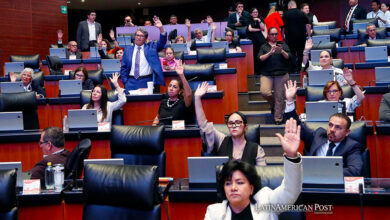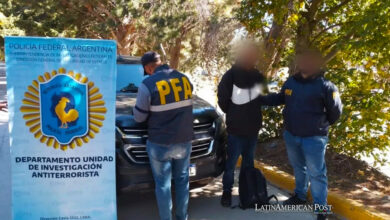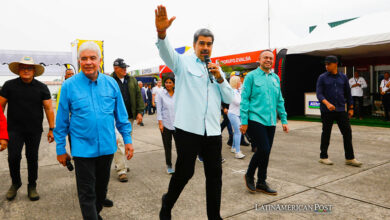Corruption has been one of the worst diseases in Latin America, and the pandemic has put it more into the spotlight.

The Woman Post | Diana Sedano Valdes
Listen to this article
"COVID-19 is not just a health and economic crisis. It’s a corruption crisis. And one that we’re currently failing to manage" (Ferreira Delia, 2021). Corruption has been one of the worst diseases in Latin America, and the pandemic has put it more into the spotlight. Several surveys in different countries in the region suggest that corruption, unemployment, and insecurity are the principal issues for citizens. However, not only citizens are worried about the weakness of institutions to combat corruption. Businesses are also affected; thus, they invest the most in assessing political risks associated with this issue. Countries under a neoliberal model are worried about the plunge of foreign direct investment during the pandemic, considering a decrease of 45% in the region. The economic crisis undoubtedly contributed to this drop. Political instability doesn’t favor attracting new investments either, concerning corruption as one of the main barriers. How has it evolved during the pandemic in Latin America?
According to Transparency International (TI), combating corruption implies strengthening oversight institutions, ensuring open and transparent contracting, promoting civic participative spaces, publishing relevant data, and guaranteeing access, among others. In Latin America, corruption occurs with bribery, embezzlement, overpricing, and favoritism. The Corruption Perception Index ranks 180 countries; during the pandemic, almost 120 countries score less than 50 with an average of 43, which means that the tendency is closer to highly corrupt States than to "very clean" ones. Results for Latin America show that there has been a stagnant for almost a decade. Corruption cases and irregularities have expanded due to an increase of power in the executive branches; this is the case, for example, in Colombia and El Salvador. However, for TI, the most alerting corruption states take place in Honduras and Peru.
On the other hand, according to the Capacity to Combat Corruption (CCC) Index*, which assesses Latin America’s ability to detect, punish and prevent corruption, Uruguay, Chile, and Costa Rica are exceptions as their strength of political institutions remain high. It means they are more effective in guaranteeing the independence of judicial institutions, the strength of investigative journalism, and the level of resources available for combating white-collar crime. While only these three countries showed improvement out of 15 measured countries, seven countries stagnated, and five declined in their effectiveness. Thus, political risks in Latin America increase considering that the two largest economies, Brazil, and Mexico, showed the worst declines.
Indeed, the continuity and uprising of public sector corruption are noticeable at the local and regional levels. In Argentina, scandals about Cristina Fernández de Kirchner, implicated in multiple investigations for corruption and using the Argentinian system to shield herself and allies, create uncertainty. In Brazil, the controversial actions of President Jair Bolsonaro and his sons shadow the efforts to strengthen Brazil’s anti-corruption institutions, while accusations of Luiz Inácio Lula da Silva keep on hold for the Odebrecht corruption scandal revealed in 2016. In Chile, alerts still remark concerning Pinera’s political weakness and the drafting of the new Constitution; nevertheless, bills and actions against corruption have risen and strengthened the system. In Colombia, corruption traction is behind the region’s effort, mainly compared to Brazil and Peru.
Also read: WHAT CAN BE DONE TO IMPROVE WOMEN'S PARTICIPATION IN POLITICAL CONTESTS?
High-level bribery is a constant in public contracts and small-scale facilitation payments at the local level. President Duque’s efforts have been directed towards responding to the crisis, and it is unlikely he will increase actions to reduce corruption during the remainder of his term. In Mexico, the fight against corruption is a key message of AMLO’s discourse. However, after two years of government, there is no tangible progress in anti-corruption policy. There has been a concentration of power in the executive, where the Financial Investigations Unit belongs, which means the president can influence the investigations that move or not forward. Finally, Peru shows one of the most complicated outlooks as several ex-presidents have been charged with corruption or investigated, creating a distrusting environment among the population. This situation has influenced the arrival of Pedro Castillo, who represents opposition to the mainstream political class.
These scandals have combined with the systemic crisis of 2020 and 2021. Transparency and anti-corruption measures are essential when dealing with a crisis. The COVID-19 pandemic has revealed that reactiveness to neutralize the effect of the crisis is highly related to the country’s history in preserving anti-corruption mechanisms and, more specifically, with universal health care coverage. Decades of corruption have created long-term effects that block responses to the sanitary crisis. Therefore, the challenge is to ensure that the budget allocated responds effectively to the crisis. It is difficult in a context where there has been less autonomy to allocate resources due to the state of emergency in some countries. According to InSight Crime, some of the most serious corruption cases were seen in Argentina, Honduras, and Peru involving mask contracts and the prioritization of vaccines for public officials in these countries and in Brazil.
The political outlook in Latin America includes several challenges regarding corruption, even if progress compared to five years ago is noticeable. Alongside, considering the influence of the United States in the region, the arrival of Joe Biden highlights the pressure to treat these challenges as Latin America, which is still seen as a zone of influence; not addressing environmental, human rights, and corruption issues could increase conflictive relationships with the US. Countries in the region show little progress in tackling corruption. Beyond this influence, governments, civil society, and the private sector should foster actions to resolve the corruption crisis and reduce political risks. All the above demonstrates that transparency will define the political agenda in the coming years. Technocrats will likely have more opportunities to hold positions of power.
*The country with the highest score in the 2021 CCC Index is Uruguay (7.80 out of 10). Uruguay was followed by Chile (6.51), Costa Rica (6.45), Peru (5.66), Argentina (5.16), Brazil (5.07), Colombia (4.81), Ecuador (4.77), Panama (4.55), the Dominican Republic (4.38), Mexico (4.25), Paraguay (4.08), Guatemala (3.84), Bolivia (2.43) and Venezuela (1.40).





